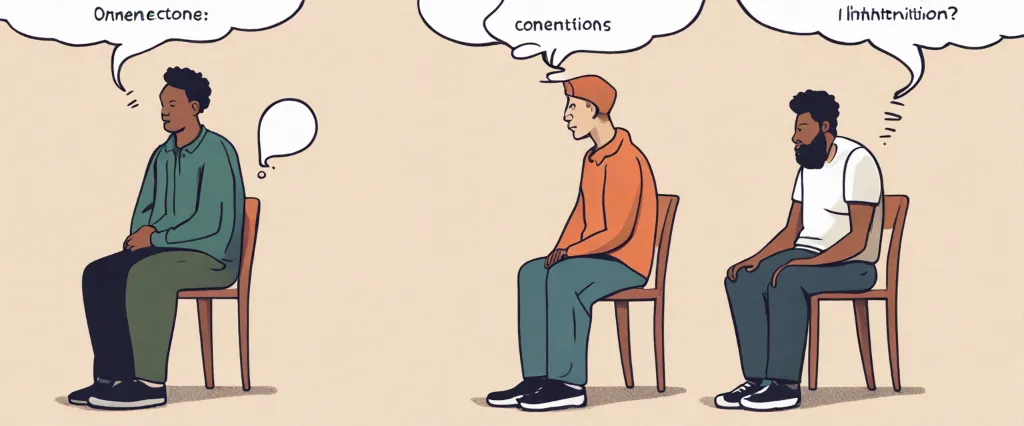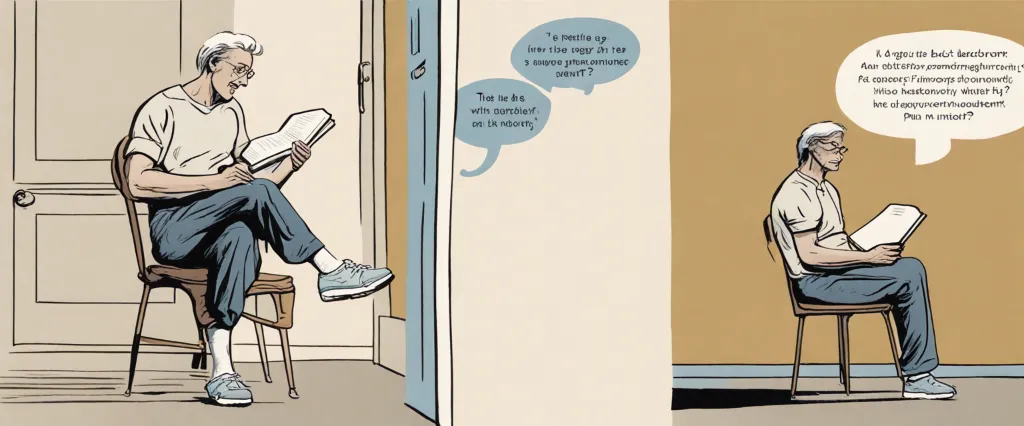In “Healing Back Pain,” renowned physician Dr. John E. Sarno sheds light on the perplexing nature of chronic back pain and proposes an unconventional approach to understanding and resolving this debilitating condition. Drawing upon his extensive experience in treating patients with chronic pain, Dr. Sarno presents a groundbreaking theory that challenges the medical community’s prevailing beliefs about back pain causes and solutions. Through his insightful exploration, he aims to empower readers to recognize the emotional and psychological factors that contribute to their suffering. Dr. John E. Sarno, a former Professor of Rehabilitation Medicine at New York University School of Medicine and attending physician at the Rusk Institute of Rehabilitation Medicine, has dedicated his life to studying and treating chronic back pain. With over five decades of clinical experience, he has pioneered the concept that emotions and repressed anger can manifest as physical symptoms, particularly in the form of chronic pain. Through his unique perspective, Dr. Sarno aims to provide individuals with a revolutionary approach to conquering their back pain and reclaiming their lives.
Chapter 1: The Mind-Body Connection: Exploring the Link Between Emotional Stress and Back Pain
Chapter 1 of “Healing Back Pain” by John E. Sarno introduces the concept of the mind-body connection and explores the link between emotional stress and back pain. The author, a renowned physician, shares his observations from years of clinical experience treating patients with chronic back pain.
Sarno challenges the conventional medical belief that back pain is primarily a structural issue, such as herniated discs or muscle spasms. He argues that these physical abnormalities are merely manifestations of a deeper psychological condition. The author proposes that repressed emotions and unconscious psychological factors are the underlying cause of chronic back pain.
According to Sarno, the mind, when under emotional stress, generates oxygen deprivation to certain muscle groups, leading to reduced blood flow and resulting in pain. He suggests that this mechanism aims to divert the mind’s attention from repressed emotional issues and directs it toward physical symptoms. The author highlights the mind’s power to create physical pain as a distraction from emotional turmoil.
Sarno explains how the unconscious mind represses emotions, often stemming from childhood experiences or personality traits. These repressed emotions, primarily anger, are believed to lead to chronic pain in various areas of the body, not just the back. By creating physical symptoms, the mind avoids dealing directly with these suppressed emotions.
In this chapter, Sarno emphasizes the significance of recognizing the mind’s role in chronic back pain and urges readers to explore the impact of emotional stress on their symptoms. By addressing the psychological aspects of pain, he suggests that individuals can break free from the cycle of chronic pain and find long-lasting relief.
Overall, Chapter 1 provides an introduction to the mind-body connection and its implications for understanding the root causes of chronic back pain. It sets the stage for the subsequent chapters, which delve deeper into methods for healing through psychological and emotional exploration.
Chapter 2: Tension Myositis Syndrome (TMS): Understanding the Psychophysiological Mechanism
Chapter 2 of the book “Healing Back Pain” by John E. Sarno, titled “Tension Myositis Syndrome (TMS): Understanding the Psychophysiological Mechanism,” introduces the concept of TMS as a psychophysiological condition that causes back pain and other related symptoms. Dr. Sarno proposes that TMS is a mind-body disorder, with the source of pain being psychological factors rather than structural abnormalities in the body.
According to Sarno, when a person experiences emotional stress or repressed negative emotions, their brain may divert these uncomfortable feelings into physical symptoms as a distraction mechanism. This diversion of anxiety and emotional tension leads to a decrease in oxygen supply to certain areas of muscles, resulting in painful muscle stiffness and spasms.
In this chapter, Sarno explains how the autonomic nervous system plays a crucial role in the development of TMS. Stress and emotional conflict cause activation of the sympathetic nervous system, which results in decreased blood flow to certain muscle groups. This lack of oxygen and nutrients leads to muscle pain and tension that manifests as back pain and other symptoms.
Furthermore, Sarno highlights that the mind-body connection is often overlooked in conventional medicine, with doctors solely focusing on structural causes of pain. He emphasizes the need to shift the focus towards treating the underlying psychological triggers and assisting patients in understanding the psychophysiological mechanism of their pain.
In conclusion, Chapter 2 of “Healing Back Pain” explores the concept of TMS being a mind-body disorder, with emotional stress and repressed negative emotions leading to physical symptoms. By understanding and addressing these psychological factors, individuals can alleviate their back pain and related symptoms.
Chapter 3: The Role of Repressed Emotions: Identifying the Hidden Causes of Back Pain
In Chapter 3 of “Healing Back Pain” by John E. Sarno, the author delves into the role of repressed emotions in the development of back pain. Sarno argues that a significant number of chronic back pain cases are not caused by structural abnormalities or physical factors but rather by the mind’s defense mechanism of repressing emotions, mainly anger and anxiety.
Sarno suggests that when individuals experience difficult emotions, particularly those related to their personal and professional lives, their unconscious mind tries to protect them by diverting the attention away from these emotions and towards physical symptoms like back pain. This serves as a distraction, preventing them from addressing the underlying emotional issues.
The author emphasizes the importance of identifying these hidden emotional causes in order to effectively treat back pain. He urges readers to reflect on their personal lives and determine if there are any sources of repressed emotions that could be contributing to their pain. By acknowledging and understanding these emotions, individuals can break the cycle of pain and address the root cause rather than relying solely on physical treatments or medications.
Moreover, Sarno provides some examples from his clinical practice, illustrating how repressed emotions have manifested as back pain in his patients. He also emphasizes the need to reject the notion that physical abnormalities are always the cause of pain, underscoring the mind’s powerful role in the manifestation of symptoms.
Overall, Chapter 3 highlights Sarno’s belief that repressed emotions play a crucial role in the development of back pain, urging readers to explore their emotional landscapes to effectively address and heal their pain.
Chapter 4: Unmasking the Mind’s Defense Mechanisms: Uncovering the Strategies of Distraction

In Chapter 4 of “Healing Back Pain” by John E. Sarno, titled “Unmasking the Mind’s Defense Mechanisms: Uncovering the Strategies of Distraction,” the author explores the various ways our minds defend against emotional pain and manifest it as physical symptoms, specifically focusing on distraction strategies.
Sarno explains that distraction is a defense mechanism our minds employ to avoid facing repressed emotions. These emotions can be buried deep within our subconscious and include anger, fear, and anxiety. By creating physical symptoms, such as back pain, our subconscious mind diverts attention from these emotional issues.
The author categorizes distraction strategies into four main types: selective inattention, internal preoccupation, focusing on the physical, and absorbing the mind. Selective inattention involves consciously or unconsciously ignoring emotional issues, diverting attention to a different aspect of life. Internal preoccupation refers to excessive worry and rumination over trivial matters, which keeps the mind occupied to prevent deep emotional exploration.
Focusing on the physical means obsessively monitoring and analyzing physical pain while disregarding emotional factors. Finally, absorbing the mind refers to immersing oneself in work, television, or other activities to avoid addressing emotional pain.
Sarno emphasizes that the mind uses these strategies as a protective shield, ultimately clouding the true cause of the pain. To overcome these defense mechanisms, he urges readers to confront and address the repressed emotions that lie at the root of their symptoms.
In conclusion, Chapter 4 provides insight into the tactics our minds employ to distract us from emotional pain. By recognizing and unmasking these strategies, readers can gain a deeper understanding of how their minds work and begin the journey towards true healing and pain relief.
Chapter 5: Mindful Awareness: Cultivating Self-Reflection and Emotional Healing
Chapter 5 of John E. Sarno’s book, Healing Back Pain, focuses on the importance of mindful awareness in cultivating self-reflection and emotional healing. Sarno suggests that the source of chronic back pain lies in repressed emotions and tensions within the subconscious mind.
The chapter begins by emphasizing the significance of mindfulness, which involves being fully present in the moment and developing an increased awareness of one’s thoughts, feelings, and bodily sensations. This practice helps individuals identify and address the underlying emotional causes of their pain.
Sarno explains that many people with chronic back pain tend to be perfectionists, overachievers, or individuals who suppress their emotions. These individuals are often driven by an unconscious desire to please others and fear failure or rejection. These internal pressures can lead to the accumulation of repressed emotions, resulting in physical symptoms such as back pain.
To address this, Sarno emphasizes the importance of self-reflection and opening up to one’s emotions. He encourages readers to become familiar with their inner thought processes, paying attention to negative thoughts and feelings that may be contributing to their pain. By consciously acknowledging and accepting these emotions, individuals can release the pent-up energy and break the cycle of pain.
The author suggests various techniques to cultivate self-reflection, such as journaling, meditation, and talking to a trusted friend or therapist. These practices encourage individuals to dig deeper into their emotions and understand the subconscious mind-body connection.
Sarno concludes the chapter by emphasizing that while medical interventions such as surgeries, injections, and physical therapies may provide temporary relief, unless the emotional causes are addressed, the pain will likely persist. Mindful awareness and self-reflection are essential tools for emotional healing and long-term relief from chronic back pain.
Chapter 6: Overcoming Fear and Resuming Activities: Restoring Confidence in Physical Abilities
Chapter 6 of “Healing Back Pain” by John E. Sarno focuses on overcoming fear and restoring confidence in physical abilities to alleviate back pain. Sarno emphasizes that the mind plays a crucial role in perpetuating chronic pain, creating a cycle of fear, tension, and further pain. He believes that overcoming this cycle is essential for long-term recovery.
According to Sarno, fear and anxiety related to physical activities, such as bending, lifting, or exercising, can contribute to back pain. These fears arise due to misconceptions about the fragility of the spine and a belief that certain movements or activities can cause severe damage. The author encourages readers to challenge these beliefs by understanding the resilience of the spine and realizing that movement and exercise are essential for healing.
To restore confidence, Sarno introduces a structured approach. He advises readers to gradually resume physical activities, starting with basic stretching and gradually progressing to more challenging exercises. By gradually pushing against their fear and pain thresholds, individuals can regain trust in their physical abilities, reduce anxiety, and break the cycle of pain.
Sarno also emphasizes the importance of not “babying” the back, as excessive caution and avoidance of physical activities can weaken the muscles and perpetuate pain. He encourages readers to adopt an active lifestyle, engaging in exercises and activities that promote overall physical and mental well-being.
The chapter concludes by emphasizing the need to confront the emotional factors that contribute to back pain, such as repressed anger or stress. Sarno asserts that addressing these underlying psychological issues is crucial for long-lasting relief from back pain.
Overall, Chapter 6 of “Healing Back Pain” provides practical advice on overcoming fear, restoring confidence in physical abilities, and breaking the cycle of chronic pain. By understanding the mind-body connection and gradually resuming physical activities, individuals can regain control over their pain and achieve lasting relief.
Chapter 7: The Power of Education: Empowering Patients with Knowledge and Understanding
Chapter 7 of the book “Healing Back Pain” by John E. Sarno focuses on the importance of education in empowering patients to overcome their back pain. Sarno argues that a lack of understanding about the psychosomatic nature of chronic pain leads many individuals to pursue ineffective and potentially harmful treatments, such as surgery, medications, and physical therapy.
The chapter begins by outlining the common misconceptions surrounding back pain. Sarno explains that the prevailing belief that structural abnormalities, such as herniated discs or spinal deformities, are the primary causes of pain is flawed. Instead, he posits that repressed emotions and psychological stressors are the main contributors to chronic back pain.
To counteract this misconception, Sarno emphasizes the power of education in enlightening patients about the mind-body connection and the role of emotions in the manifestation of physical pain. He believes that by understanding the mechanisms behind their pain, patients can gain a sense of control over their symptoms and aid their own recovery.
Sarno introduces his Tension Myositis Syndrome (TMS) diagnosis, wherein the brain creates pain as a distraction from uncomfortable emotions. He highlights the significance of identifying underlying emotional stressors and encourages patients to express their emotions, whether through journaling, therapy, or support groups.
Furthermore, the chapter delves into the critical role of patient self-education. Sarno asserts that patients should take responsibility for educating themselves about TMS by reading books and scientific studies related to mind-body healing and chronic pain. He also offers numerous resources for further reading and knowledge enhancement.
In summary, Chapter 7 underscores the transformative potential of knowledge and understanding in combatting chronic back pain. By dispelling misconceptions, educating patients about the psychological origins of pain, and empowering them to take charge of their healing process, Sarno believes that patients can achieve long-lasting relief from debilitating back pain.

Chapter 8: Living Pain-Free: Embracing a Holistic Approach to Healing Back Pain
Chapter 8 of “Healing Back Pain” by John E. Sarno, titled “Living Pain-Free: Embracing a Holistic Approach to Healing Back Pain,” focuses on a holistic approach to overcome and prevent back pain. Sarno emphasizes the importance of understanding the mind-body connection and the role of repressed emotions in causing physical pain.
Sarno begins by highlighting the ineffectiveness of traditional medical approaches in treating chronic back pain. He argues that while physical abnormalities may be present, they seldom fully explain the intensity or persistence of the pain. Instead, he suggests that repressed emotions, particularly anger, anxiety, and unconscious rage, are often the underlying causes.
The author emphasizes the need to confront and address these repressed emotions as a crucial step in healing back pain. He presents several case studies of individuals who experienced significant relief from chronic pain after gaining insight into the psychological and emotional factors contributing to their condition.
Sarno further encourages readers to practice focused attention, quickening the healing process. This involves acknowledging the mind-body connection and understanding that emotions can manifest as physical pain. By recognizing this connection and accepting their repressed emotions, individuals are better equipped to resolve their pain and prevent future episodes.
Additionally, Sarno introduces the concept of “Structured Educational Program,” which is essentially a set of guidelines for managing and overcoming chronic pain. This program includes educating oneself about the mind-body connection, recognizing the psychological factors contributing to pain, and incorporating relaxation techniques such as deep breathing and positive affirmations.
Overall, Chapter 8 of “Healing Back Pain” reinforces the importance of a holistic approach to back pain, emphasizing the significance of addressing repressed emotions and understanding the mind-body connection. By embracing this perspective, individuals can strive towards living a pain-free life.
After Reading
In conclusion, “Healing Back Pain” by John E. Sarno is a game-changing book that challenges traditional beliefs about the causes and treatment of back pain. Sarno’s groundbreaking theory suggests that the majority of cases are not due to physical abnormalities, but rather psychosomatic factors such as repressed emotions and stress. By understanding the mind-body connection and addressing these underlying emotional issues, Sarno claims that people can overcome chronic back pain without invasive procedures or long-term medication. While his theory is met with skepticism by some in the medical community, the countless success stories shared in the book provide hope and inspiration for those suffering from back pain. Overall, “Healing Back Pain” encourages readers to reevaluate their beliefs about the origins of their pain and discover a holistic approach to healing.
1. “Mind Over Medicine: Scientific Proof That You Can Heal Yourself” by Lissa Rankin, M.D. – Similar to “Healing Back Pain,” this book explores the mind-body connection and how our thoughts and beliefs influence our physical health.
2. The Pain Chronicles: Cures, Myths, Mysteries, Prayers, Diaries, Brain Scans, Healing, and the Science of Suffering” by Melanie Thernstrom – Thernstrom delves into the world of chronic pain, exploring the science, history, and personal stories behind it. This book provides a comprehensive understanding of pain and potential avenues for relief.
3. “You Are the Placebo: Making Your Mind Matter” by Dr. Joe Dispenza – In this book, Dispenza explores the power of the mind and how belief systems can impact our health. He presents compelling evidence and practical techniques for using the mind to heal various ailments, including chronic pain.
4. “The Divided Mind: The Epidemic of Mindbody Disorders” by Dr. John E. Sarno – While this recommendation excludes “Healing Back Pain,” Dr. Sarno’s other influential book is worth mentioning. In “The Divided Mind,” Sarno further explores the mind-body connection and tackles a range of mindbody disorders beyond back pain.
5. The Body Keeps the Score: Brain, Mind, and Body in the Healing of Trauma” by Bessel van der Kolk – This book focuses on understanding and healing trauma, emphasizing the importance of mind-body approaches in recovery. While not solely dedicated to pain, it offers valuable insights into how psychological trauma can manifest physically and provides strategies for healing.




